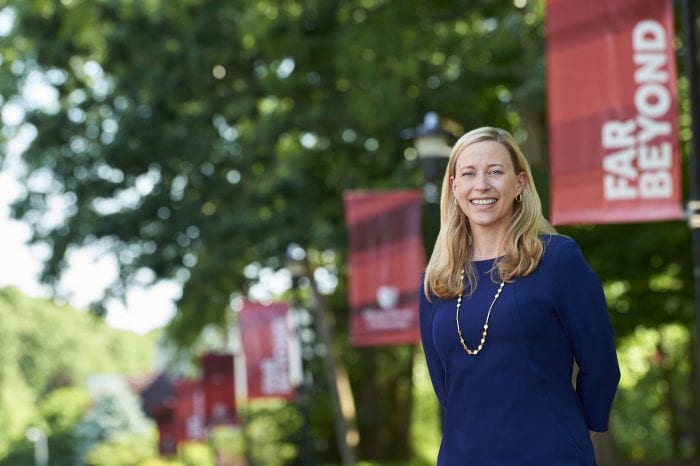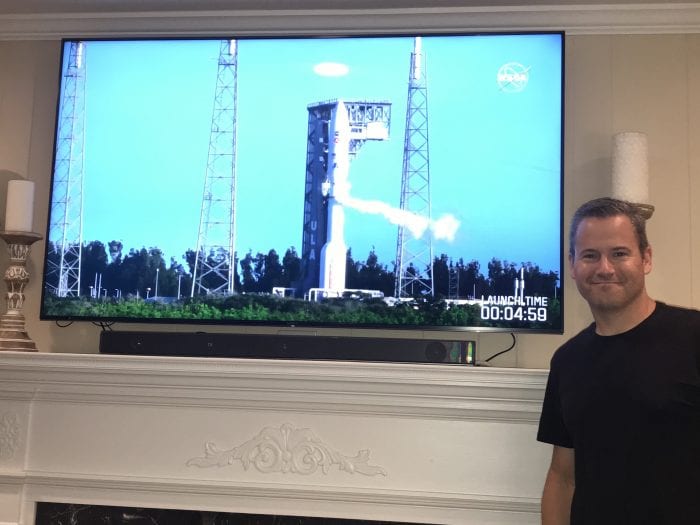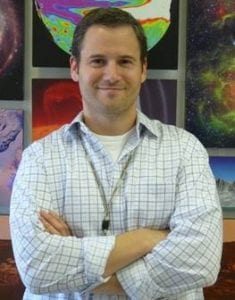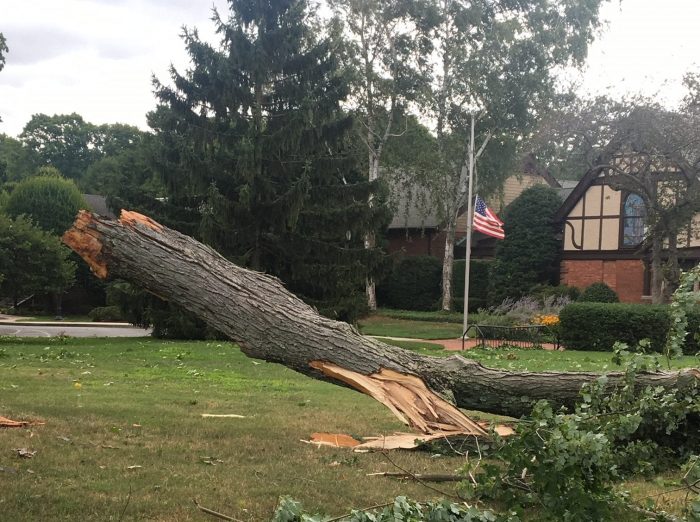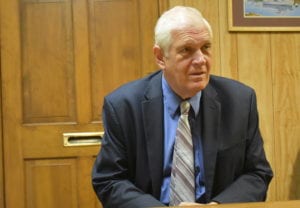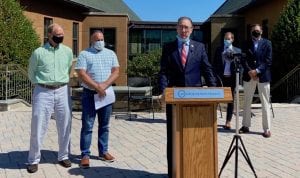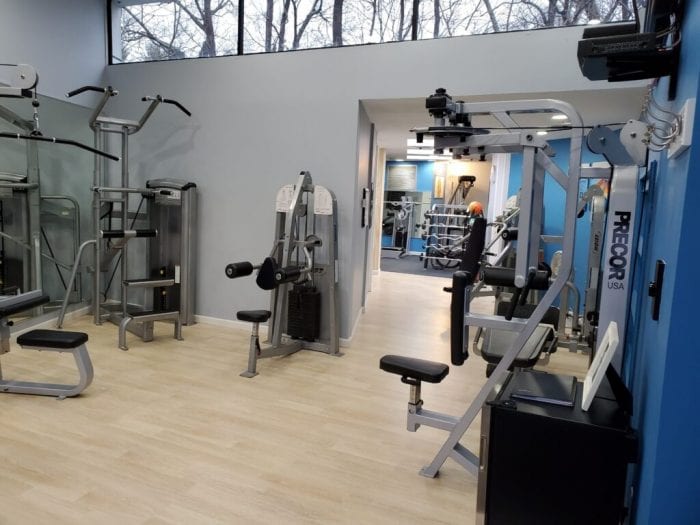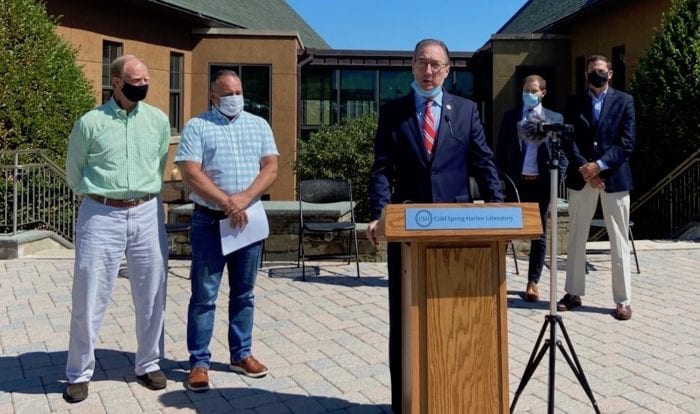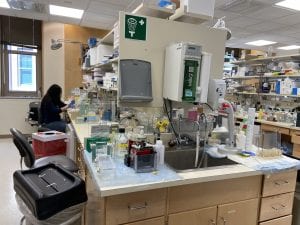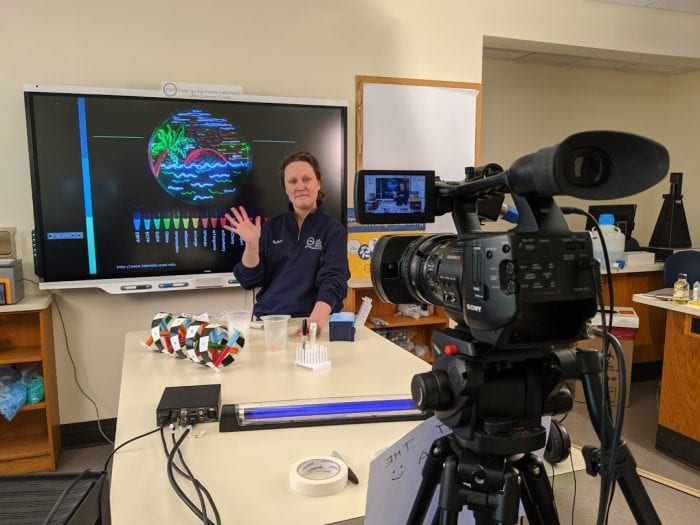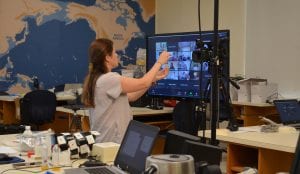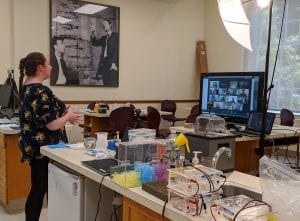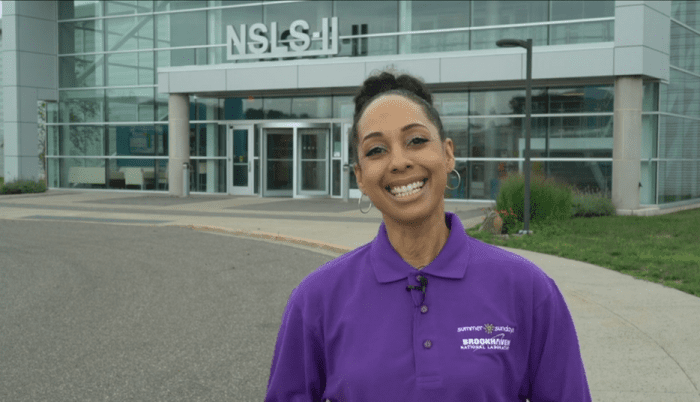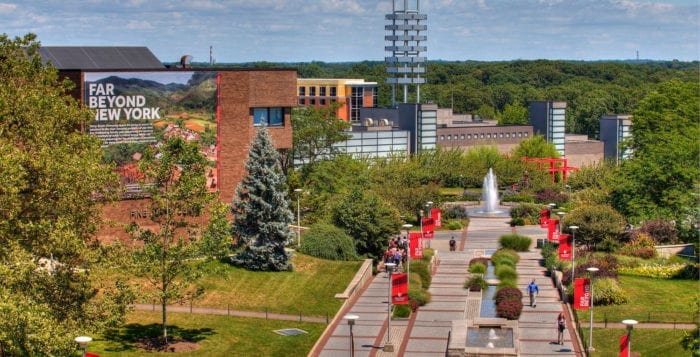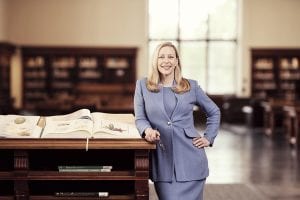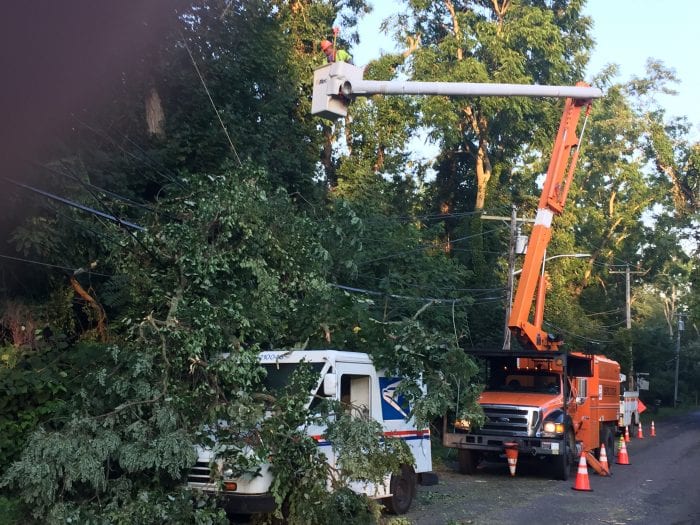Stony Brook University will not let the actions of some students derail the on-campus living and learning experience for the majority.
This past weekend, days before the start of an unusual fall semester Aug. 24 amid ongoing concerns about the pandemic, the university found a “small number of violations” of the university’s COVID-19 health policy. Several students have been put on interim housing suspension for violations pending the conclusion of a conduct case, Maurie McInnis, who became the sixth president of SBU in July, said in an interview. The students in question have not been suspended from their academic studies.
McInnis said the school would suspend other students “if that is necessary.” She added that it is “very important that we give the students who are acting responsibly the opportunity for the in-person residential experience that they are working hard to protect.”
The school’s disciplinary actions follow similar measures taken by other universities such as Syracuse University and the University of Connecticut, which are trying to provide students with an opportunity to benefit from an on-campus experience while protecting faculty, staff and students from the spread of COVID-19.
McInnis added she appreciated the chance to be a part of the excitement that comes from the first day of what is likely to be one of the most challenging in the school’s 63-year history.
“It feels so great to have students back on our campus,” she said. “While, yes, it is under circumstances that are different than we’re used to, the same energy and excitement is there.”
The new university president said she enjoyed meeting students and their families as they moved onto the campus prior to the first day of classes.
The new president, who is a cultural historian and author of “Slaves Waiting for Sale: Abolitionist Art and the American Slave Trade,” said she feels confident in the school’s ability to navigate through the challenges of on-campus living and learning.
Students “understand that the way we are all going to have a great semester” is to act “personally responsible, wearing our masks and being socially distant,” she said.
SBU has created a dashboard that will track the number of tests the school is conducting on campus and the number of positive cases, if there are any. So far, the school has only had negative tests.
The dashboard is available at: www.stonybrook.edu/commcms/irpe/covid-19.phpleadership. It shows that the hour in the week in which the number of students registered for in-person classes is the highest is Tuesday, between 11 a.m. and noon, when 2,721 students were registered for in-person classes. In that same hour in the fall of 2019, 13,836 students took in-person classes.
The university will monitor its dashboard closely and will alter its policies as necessary to protect the campus community.
McInnis said the school was preparing for a possible second wave of the pandemic in the fall, as well as the possibility of the coincident timing of an outbreak of the flu.
“We are watching and monitoring all that carefully,” she said, which includes having enough personal protective equipment and a plan in place for health care personnel, among other measures.
McInnis said it is “too soon to speculate on” what the university policy might be if and when researchers develop a vaccine for COVID-19.
“As a part of SUNY and a public institution, we would be working with state partners and the [New York] Department of Health in making any sort of decision” about a vaccination for students or faculty, she said.
McInnis, who shared a detailed and open letter with the community and the public about the university’s difficult financial condition, said the budget remains a “fluid situation.” She added that the university “needs to get to work straight away as a community” in an “open and collaborative fashion to bring the best ideas for collaborating and working together better for leveraging opportunities, for efficiencies on our campus” and to develop ways to generate new revenue.
Meanwhile, the university has spent the summer “significantly improving” the quality of the remote and distance learning for students engaged with the online platform, she said.
In addition to being the new university president, McInnis is also a parent of a college-age son. Her son’s school was going entirely nonresidential and remote, so he decided to take a gap year.
At Stony Brook, the total number of students registered is 26,130, which is about 200 fewer than last year, suggesting that deferrals haven’t affected the matriculation rate much this fall.
McInnis said she appreciated the ongoing support of the university and surrounding communities.
“What we have been hearing, again and again, is, ‘How can we help?’” she said. “It is so great as president to be part of the community that clearly has the devotion of so many people.”
This article has been updated Aug. 25 to give more info on the nature of students violations and their interim suspension.

